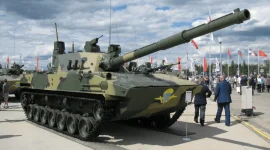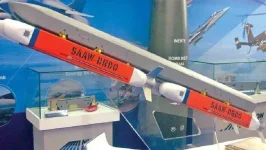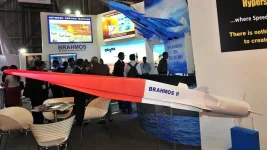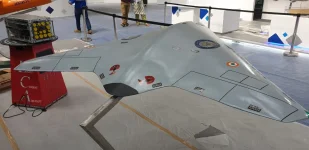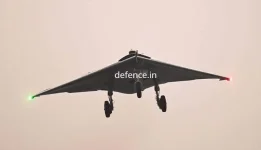- Views: 3K
- Replies: 11
In a landmark achievement for India's aerospace and defence sectors, the Defence Research and Development Organisation (DRDO) has successfully engineered and produced high-pressure turbine blades.
These critical components are essential for a domestically developed small turbo-fan engine, marking a significant stride towards India's goal of self-sufficiency in vital aero engine technologies.
The intricate development process was detailed by scientists from DRDO’s DMRL and the Gas Turbine Research Establishment (GTRE) in Bengaluru, in a study published in the Defence Science Journal (Vol. 73, No. 2, March 2023).
Their paper, "Realization of High Pressure Turbine Blades of a Small Turbo-Fan Engine through Investment Casting Process," outlines the sophisticated methods used to create these aeronautical-grade components.
DMRL is renowned for its research and development in metallurgical science and technology, while GTRE focuses on the design and development of gas turbine engines for military applications.
The high-pressure turbine is a core element of any gas turbine engine, tasked with converting the intense energy from extremely hot, high-pressure gases into mechanical power.
The newly developed blades are intended for a twin-spool small turbo-fan engine (STFE), which is designed to power unmanned aerial vehicles (UAVs). India's focus on enhancing its UAV capabilities makes this development particularly timely.
Each turbine unit requires 50 of these solid, unshrouded blades. Constructed from advanced nickel-based superalloys, they are engineered to endure severe mechanical stresses, resist corrosion, and operate reliably at temperatures exceeding 1,000 degrees Celsius.
The production of these blades employed vacuum investment casting, a specialized technique reserved for high-performance components used in modern aero engines. This method allows for the creation of complex shapes with high precision.
Process Highlights: Advanced Techniques and Precision Manufacturing
- Design and Tooling: The blades feature a complex, twisted aerofoil shape, manufactured to exceptionally precise measurements, with a permitted variation of only ±0.13 millimetres on the aerofoil surface. To create the initial wax models of the blades, a special hinged die was designed. This design helps prevent the delicate wax patterns from breaking and compensates for the way the material shrinks differently in various directions during the casting process. Computer-aided design (CAD) tools and specialized simulation software, such as Moldex3D®, were utilized to perfect the die design and ensure optimal flow of wax during injection.
- Shell Mould Fabrication: A ceramic shell, which forms the mould for the molten metal, was constructed layer by layer. This involved using zircon-based materials and colloidal silica binders, with subsequent layers built up by coating with mullite grits. These moulds were then heated to a very high temperature of 1190°C before the molten superalloy, heated to 1540°C, was poured into them under vacuum conditions (1×10⁻³ Torr) to ensure purity and structural integrity.
- Casting Evaluation: Over 1,700 individual blades were cast during the development phase. A final production yield of 74% was achieved, which is considered an excellent outcome for aeronautical-grade components of this complexity. To guarantee that only flawless blades were accepted, each one underwent rigorous non-destructive testing, including visual inspections, fluorescent penetrant inspection (FPI) to detect surface cracks, and radiography to identify any internal defects.
Material & Performance Validation
- Microstructure & Porosity: Examination under microscopes confirmed that the blades possessed a fine-grained, equiaxed crystal structure, featuring the desirable γ–γ′ phases. This type of microstructure is ideal for providing strength at high temperatures. Furthermore, porosity levels (the presence of tiny voids) within the blades were strictly controlled, remaining below 1% in the critical aerofoil section and under 2% in the root and platform areas.
- Mechanical Properties: Test bars made from the same material and subjected to heat treatment successfully met and, in some cases, surpassed the required performance standards. For instance, the tensile strength at room temperature was recorded at 830 Megapascals (MPa), exceeding the minimum requirement of 800 MPa. The stress rupture life, a measure of how long the material can withstand a specific load at high temperatures, reached up to 88.7 hours at 975°C under a stress of 196 MPa. The hardness of the material after an aging heat treatment was approximately 363 Vickers Hardness Number (VHN).
Strategic Impact: Strengthening Aero Engine Self-Reliance
This accomplishment clearly demonstrates the DRDO's advancing capabilities in the highly complex field of aero engine component development. Mastering the sophisticated casting of nickel-based superalloys is particularly noteworthy, as this technology has traditionally been dominated by a small number of international original equipment manufacturers (OEMs).As India progresses with its ambitious indigenous fighter aircraft programmes, including the Tejas Mk2, the TEDBF, and the forthcoming AMCA, the ability to manufacture such critical hot-section engine components within the country is a strategic imperative. Developing aero engines has historically been a significant challenge for India's aerospace ambitions, often described as a "bottleneck."
The successful manufacturing of these high-pressure turbine blades not only provides a boost for UAV propulsion systems but also establishes a crucial foundation for wider indigenisation of jet engine technology. This will reduce reliance on foreign suppliers and bolster India's long-term strategic autonomy in the critical aerospace and defence domain.

